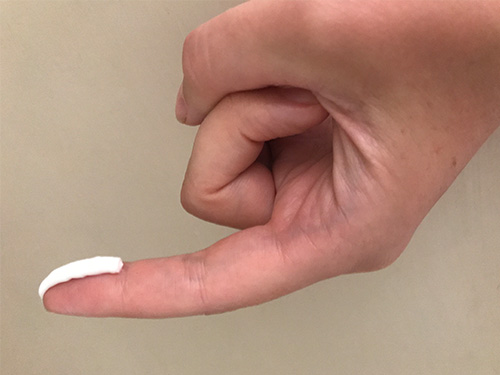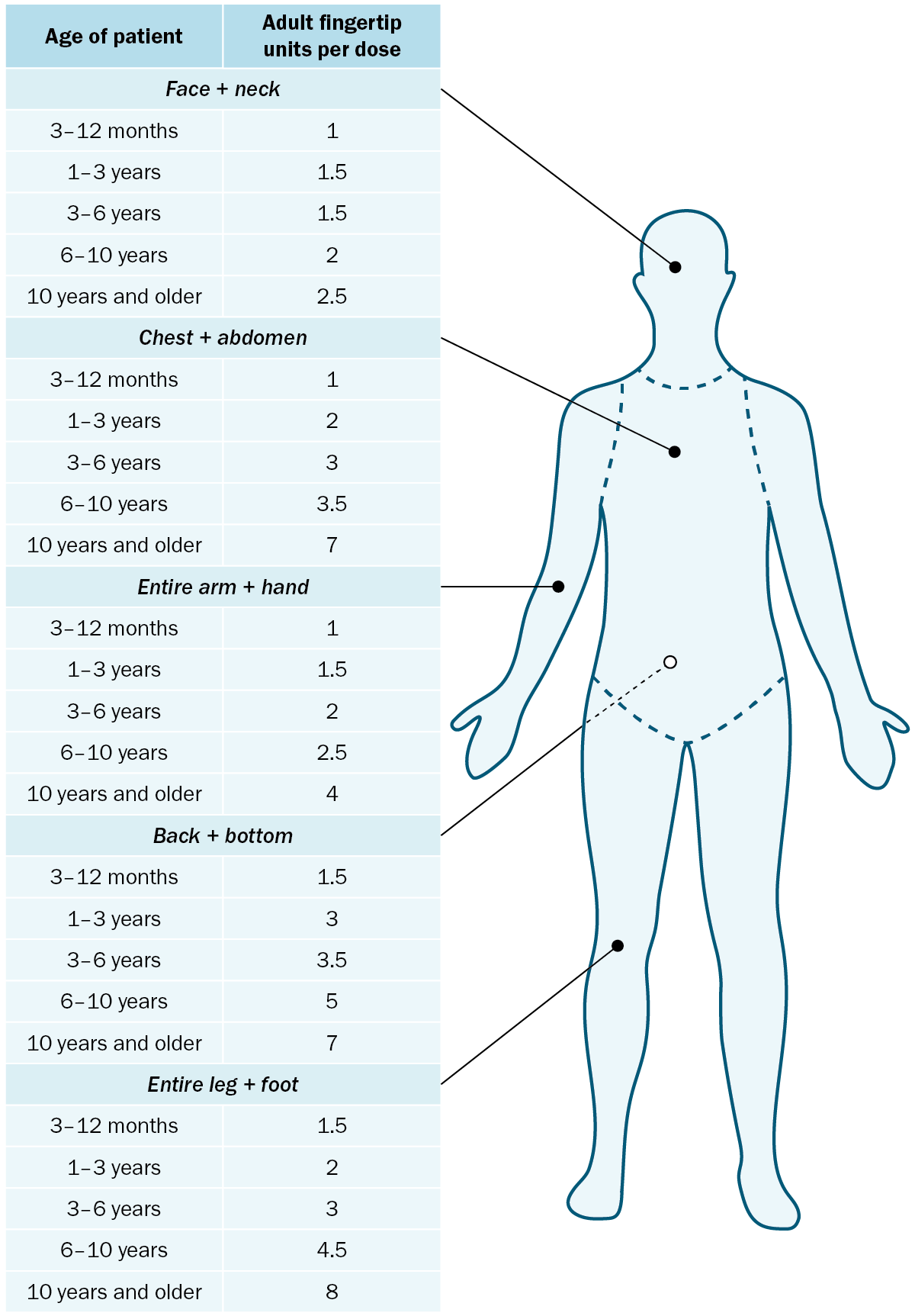Application and quantity of topical corticosteroids
Topical corticosteroids should be applied liberally (not sparingly) to all areas of inflammation (not just to the worst areas).
Ensure an adequate quantity of topical corticosteroid is prescribed to treat the entire affected area for the appropriate duration—authority from the Pharmaceutical Benefits Scheme (PBS) may be required to prescribe a sufficient quantity of corticosteroids.
A ‘fingertip unit’ is a term used to explain to a patient how much topical corticosteroid should be applied. One fingertip unit describes the amount of product that is squeezed out of the tube from the tip of the index finger to the first crease of the index finger—see here for photo of a fingertip unit of cream. One average adult fingertip unit is usually enough to cover an area of skin the size of two flat adult hands with fingers together.

Photo sourced with permission from Ms Hannah Verhellen.
Australian Medicines Handbook (AMH) Pty Ltd, Updated April 2017Bewley, 2008Long, 1998

